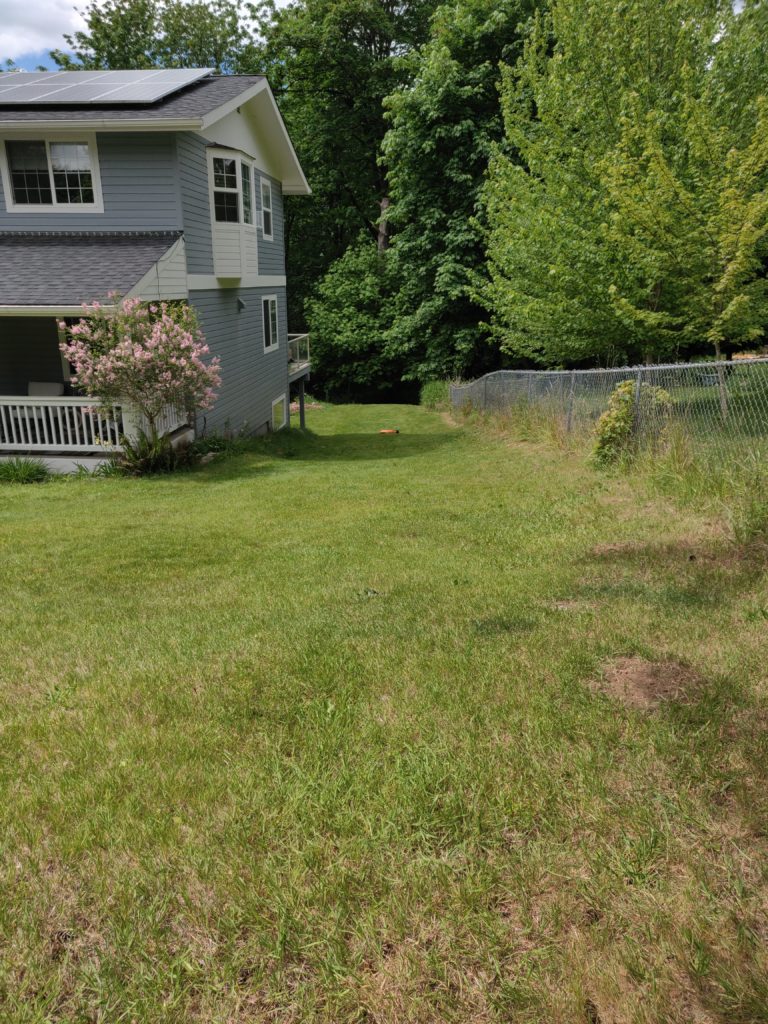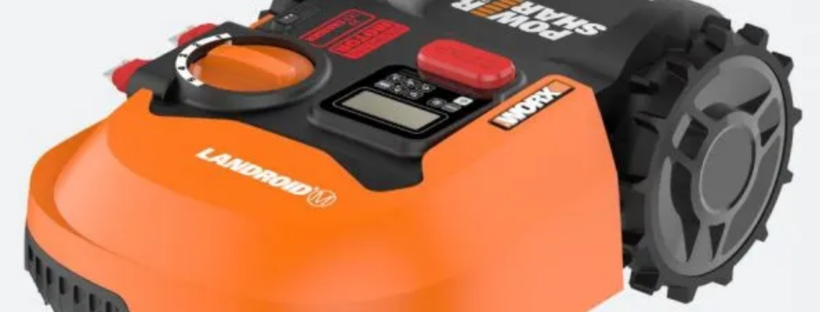A few years ago we went from a townhouse with no lawn to a house with 2/3rd acre of land. We started with a cheap electric mower to get by while we figured out how to deal with the yard.
While we enjoyed mowing it was hard to make time – between my travel schedule, weather, family life, etc it can be hard to take an hour or so to mow weekly. Many of our neighbors use riding mowers or lawn services, I decided to take another approach with a robot mower. Needless to say that leads to many common questions I decided to answer.
WTF Is A Robot Mower?
Think off road Roomba with razor blades.
How Does it Know Where to Mow?
Most robot mowers available today use a perimeter wire but some new ones coming use cameras, beacons, etc.
Is that Safe for my Pets/Kids?
Pretty safe – mine has folding blades to avoid giving deep cuts to solid objects, blade guards, stops when lifted, etc. Some can even use cameras to avoid people and animals.
Won’t it Get Stolen?
They’re useless without the base, wiring, and the pin code to start the unit – but if you’re really worried about it some have GPS to locate stolen units.
Does it really work?!
Yes, we have a hilly lawn and it’s handling it quite well. Our biggest issue is patchy grass near the bottom of the lawn where loose wet soil causes traction issues (we’re working on it). The better the turf, the better the robot will do especially on the edges where it turns.
I’ve also discovered in many ways a robot works better. Mine mows daily – it looks perfectly cut every day instead of shaggy at the end of the week between mowings. And mine (not all) randomly cut which prevents ruts from forming in the lawn.

first week of robot mowing, still looking good! 
working the slope 
the kiddo wants to be a robot mower
Why Robot Instead of The Alternatives?
Needless to say I didn’t want to use a gas mower of any kind and I’m a cheapass, so lawn services were a no-go. There are electric riding mowers for $2000-4000, but given that costs more than a robot and takes more time, I couldn’t justify that choice (though it would make sense for a lawn too big for a robot). So to me the robot for $1200 seemed like a bargain.
Is a Gas Mower Really that Bad?
Far worse than you would expect – people tend to think a lot about CO2 but there’s lots of nasty emissions from small engines like particulate matter, hydrocarbons, carbon monoxide, and nitrogen oxides. Per EPA regulation gas push mowers sold since 2012 may produce as much hydrocarbons and nitrogen oxides in an hour as a car driven 160 miles (and older mowers are far worse).
According to the EPA gas lawn equipment is responsible for nearly 4% of all VOCs emitted and 12% of the CO2. You can make a surprisingly huge impact by just changing out lawn equipment.
What About Electric Mower Power Use?
Of course I used my trusty Kill A Watt to see how much power my robot mower used weekly. I’m rather impressed to say only about 3 kwh. While that’s more than my electric push mower used (about .75kwh), we’re still talking like 30 cents to run weekly – far less than the cost to operate a gas mower. As for emissions 3kwh could be anywhere from 0-6lbs of CO2 emissions (depending on utility), which is still a fraction of the emissions it would take to mow with a gas mower.
Aren’t Lawns Just Environmentally Terrible?
Once you address the equipment emissions a couple other major grass lawn issues are water use and fertilizers. Water use doesn’t change with a robot, but being in Western Washington means nature waters the lawn. For those in dryer climates certainly ditching grass is a huge impact for water conservation.
Robot mowers compost clippings so that reduces fertilizer needs. I’ve added clover to my lawn to add nitrogen to the soil, but you can also use organic fertilizers (used sparingly to avoid runoff) to the same effect. Many of the organic fertilizers take a more holistic approach focused on improving soil microbiomes and are surprisingly affordable.
Aren’t You Just Lazy?
Certainly people have said that, but at some point in history people probably considered dishwashers lazy. When you’re an early adopter you’re lazy…when most people have one, its fine.
But you can look at it another way – I gained at least a day every year. Instead of spending over an hour mowing my lawn 20 times a year, my robot does it and I get more time for other things.
Which Robot Mowers Do you Recommend?
The Worx Landroid was my choice, its a PC Magazine Editors choice and starts at just $1000. The Husqvarna Automower has higher end units for larger and hillier lawns, but expect to spend $1600-5000.
Bottom Line
When I polled fellow robot mower owners time savings was the #1 reason they bought a robot mower followed by lawn appearance, the coolness of having a robot, and saving money on lawn services. In fact environmental impact received the fewest votes of all the reasons. And I’m okay with that – get a robot lawn mower because it’s cool and saves time, you’re helping reduce emissions anyway =).
